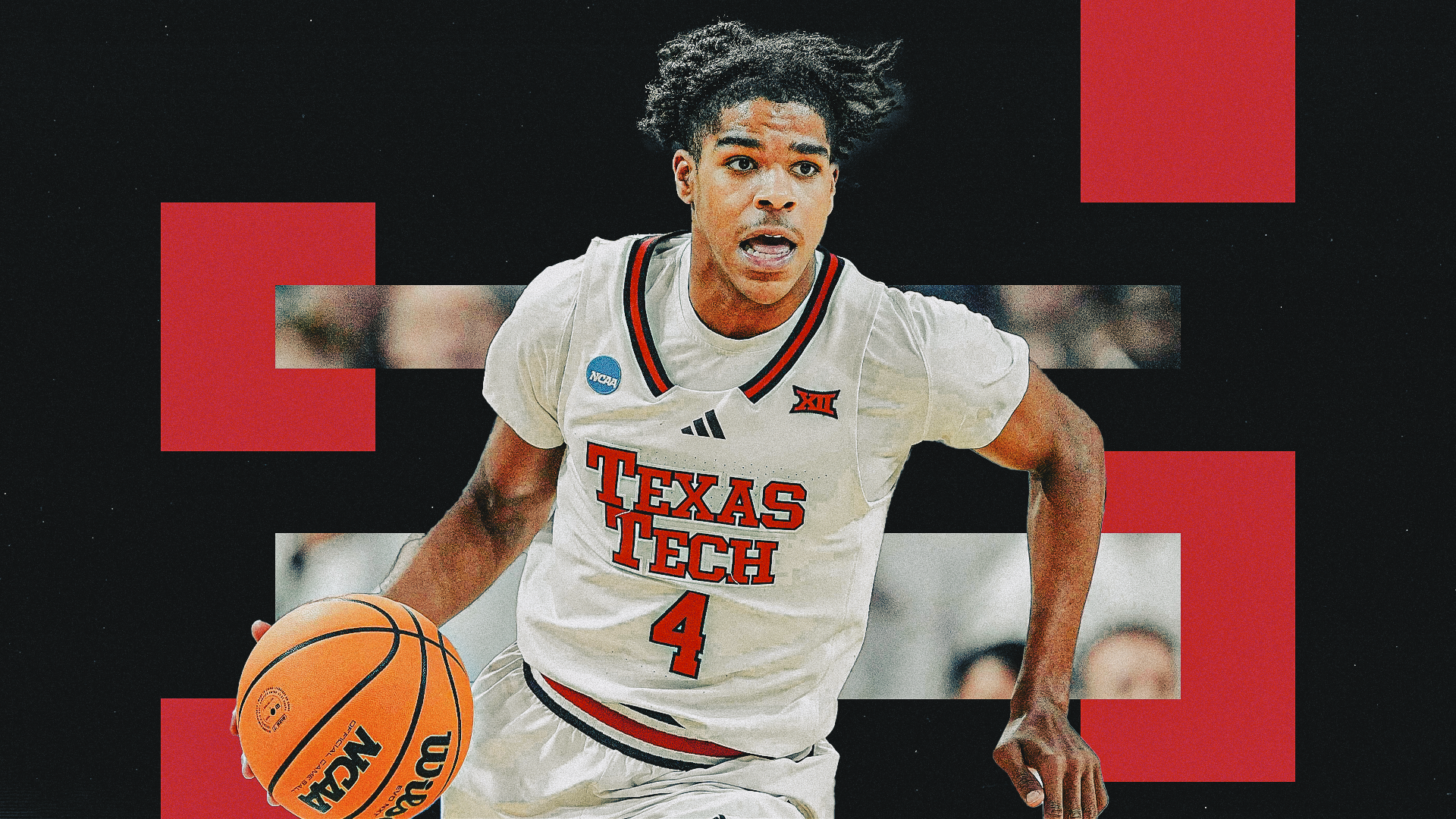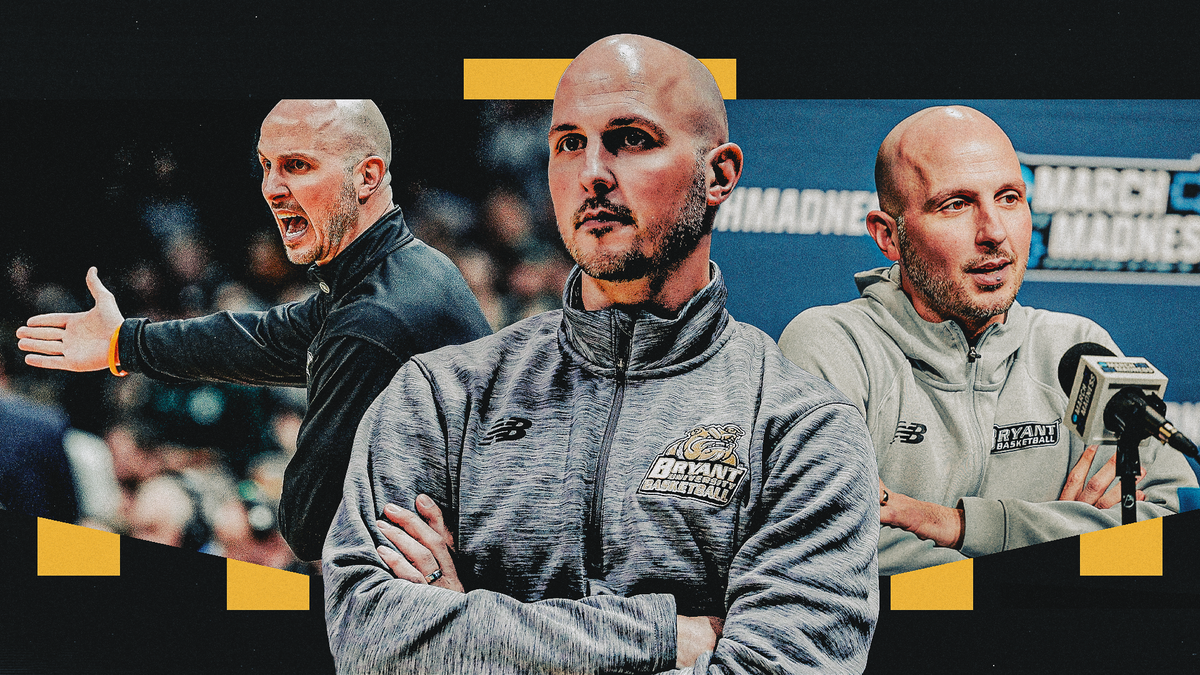Only four freshmen in college basketball averaged 10+ points per game last season while maintaining a true shooting percentage over 59% and an assist-to-turnover ratio over 2.0. Three were selected in the first round of the NBA Draft: Duke's Cooper Flagg (No. 1 overall pick) and Kon Knueppel (No. 4), and Michigan State's Jace Richardson (No. 25). The other was Texas Tech's Christian Anderson.
Anderson's strong freshman season — 10.6 points and 2.2 assists per game — flew a bit under the radar playing alongside three All-Big 12 performers. Additionally, his return for a second season is perhaps overshadowed by one of those teammates, Big 12 Player of the Year and second team All-American JT Toppin, also coming back to Lubbock.
Toppin sets a high floor for Texas Tech as a National Player of the Year candidate, but what if Anderson takes a true star leap?
Anderson already showed signs of growth throughout his freshman season, upping his scoring average for the nationally-ranked Red Raiders with each passing month. The trajectory was already a steady one, but the hype train only gathered steam in the offseason.
Anderson continues to stand out on big stages
When it comes to projecting year-over-year jumps in college basketball, not many players can showcase improvements over the summer. Yet, Anderson was able to do that with a starring performance of leading Germany to a second-place finish the FIBA U19 World Cup. He averaged 17.3 points, 4.9 rebounds, and 6.6 assists per game at the event, notably showing increased playmaking volume.
He also put up numbers against two of the toughest opponents of the competition, notching 18 points and nine assists against Team USA, as well as 29 points and six assists against Team Canada.
Anderson became the ninth player since 2017 to earn FIBA U19 All-Tournament honors in the summer between his freshman and sophomore campaigns. The track record of the others bodes well:

The sophomore accolades from this group speak for themselves: Ivey was a First Team All-Big Ten selection and Second Team All-American as a sophomore; Perry was named the SEC Co-Player of the Year; Edey, Haliburton, and Pritchard were all second team all-conference honorees; Ayayi won WCC Tournament Most Outstanding Player.
Dating back to the event's origin in 2009, three others also earned All-Tournament honors before their sophomore seasons: Butler's Gordon Hayward, Kansas's Tyshawn Taylor, and UConn's Jeremy Lamb. Again, not bad company. Hayward won Horizon League Player of the Year as a sophomore while Lamb stepped into the starring role departed by Kemba Walker to earn First Team All-Big East recognition.
How does Anderson's role change in Year 2?
A big key for Anderson as a sophomore will be stepping into the full-time playmaking role following Elijah Hawkins' departure. Hawkins, who ranked 44th nationally in individual assist rate last season, will not be easily replaced but Anderson-led lineups had plenty of success last season to invoke optimism. Albeit in only a 482-possession sample size, Texas Tech's offense actually performed better with Anderson at point guard (129.1 adjusted points per 100 possessions) than not (127.7), per Hoop-Explorer:

Anderson's impact as a 3-point shooter played a large role, but ball movement also took a jump. Still featuring a high-level passing forward in Darrion Williams even when Hawkins sat helped, but the Red Raiders recorded assists on 62.1% of their made baskets with Anderson on and Hawkins off last season, compared 54.7% in the reverse situations. As an individual, Anderson's assist rate jumped from 9.5% when sharing the floor with Hawkins to 19.5% when operating as the primary ball-handler.
Additionally, Anderson showed improved passing to counter teams trying to slow him down as a scorer at the U19 World Cup. When he struggled to a 2-for-11 outing against Team Serbia in the Group Phase, he pivoted to an event-high 12 assists (three turnovers). Albeit in a losing effort, he similarly dished nine assists to four turnovers amid a 6-for-19 shooting performance against Team USA in the final.
Finishing, defense to determine sophomore ceiling
Anderson is a known commodity as a shooter, and his playmaking numbers suggest the ability to slide over into Texas Tech's full-time point guard role. The biggest remaining unknowns regard his finishing and defense. Listed at 6-3 but just 178 pounds, Anderson's slight frame caused some issues in those areas last season. While Anderson was effective at the rim when he got there, the volume lagged behind:

On the defensive end, Texas Tech was 2.1 adjusted points per 100 possessions better with Anderson off the floor compared to on (Hoop-Explorer). The numbers, as with most defensive metrics, might be a tad deceiving, though. Anderson improved defensively during his freshman season, eventually earning the trust to take on some significant defensive assignments down the stretch.
Nathan Giese of the Lubbock Avalanche-Journal specifically praised Anderson's defensive contributions on West Virginia's Javon Small just one game after fouling out against TCU, complete with a complimentary quote from head coach Grant McCasland on the young guard's mindset:
"The thing about Christian is he embraces this," McCasland said. "This means a lot to him, and defense doesn't mean a lot to a lot of people. He said it himself, he hasn't been a defender ever in his life, or he hasn't been expected to be one of the best defenders, but his anticipation and his competitiveness is as good as anybody I've ever coached. His motor never stops."
As far as this upcoming season goes, Anderson will also have the added benefit of shot-blocking behind him. Texas Tech ranked just 232nd in block rate last season. VCU transfer Luke Bamgboye essentially ensures Texas Tech will improve on that after posting the second-best individual block rate in the country (14.5%) as a freshman last year.
A new preseason outlook in Lubbock
After losing to Final Four teams in each of the last two seasons, Texas Tech has its sights set on being the team cutting down regional — if not national — nets this spring. JT Toppin sets a high floor as a returning second team All-American. Coach McCasland also brought in a talented transfer class featuring Donovan Atwell (13.3ppg at UNCG) and LeJuan Watts (13.6 ppg, 6.7 rpg, 4.4 apg at Washington State) to help propel preseason hype.
For the first time in program history, Texas Tech enters the upcoming season as a preseason top 10 team. With expectations comes major pressure, and how Anderson rises to the occasion will determine much of whether the Red Raiders can reach their ceiling. If he keeps on his trajectory into sophomore stardom, though, Texas Tech will not only have a go-to guard but a one-two punch with Toppin few in America can match.
It is an extremely high bar, but 18 of the 27 teams to feature two or more consensus All-American honorees since 1985 (tournament expansion) made at least the Elite Eight. Ten made the Final Four. Six made the national championship. Three won it all.


